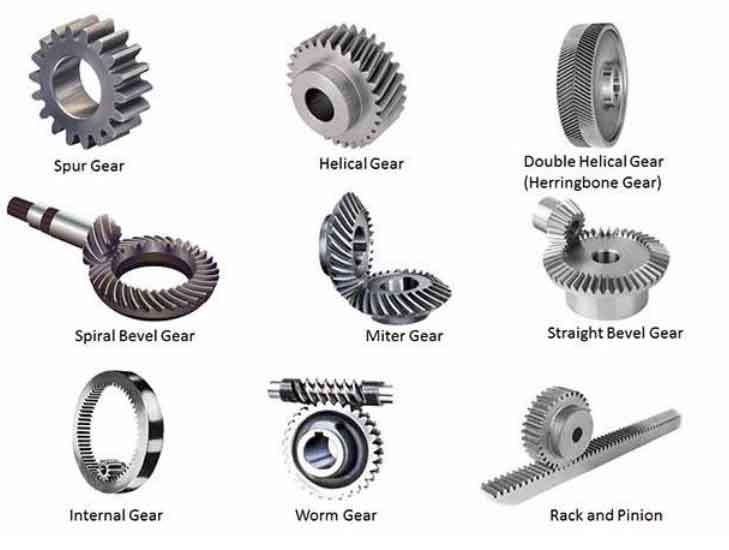Spur gears and worm gears are two common types of gears used in mechanical systems. While both gears serve the purpose of transmitting power and motion between two rotating shafts, they have different characteristics and applications. Let’s compare spur gears and worm gears in terms of their design, efficiency, torque transmission, backlash, and applications.

- Design:
- Spur Gears: Spur gears are cylindrical gears with teeth that are parallel to the axis of rotation. The teeth on spur gears are straight and extend radially from the gear’s center. They mesh with another spur gear to transmit power.
- Worm Gears: Worm gears consist of a cylindrical gear called a worm and a toothed wheel called a worm gear. The worm has a helical thread that meshes with the teeth of the worm gear. The worm can have a single-start or multi-start thread.
- Efficiency:
- Spur Gears: Spur gears are known for their high efficiency, typically around 95-98%. They have low sliding friction and provide smooth power transmission.
- Worm Gears: Worm gears generally have lower efficiency compared to spur gears due to the sliding action between the worm and the worm gear teeth. The efficiency of worm gears typically ranges from 70% to 90%.
- Torque Transmission:
- Spur Gears: Spur gears are suitable for transmitting high torque loads. They can handle both parallel and axial loads effectively.
- Worm Gears: Worm gears are designed to provide high gear reduction ratios and are commonly used when a large torque reduction is required. They excel at transmitting high torque in applications such as lifting heavy loads.
- Backlash:
- Spur Gears: Spur gears can have backlash, which is the slight clearance between the mating gear teeth. However, backlash can be minimized by proper gear design and manufacturing techniques.
- Worm Gears: Worm gears typically exhibit higher backlash compared to spur gears. The nature of their design and meshing configuration can lead to more significant backlash, which may need to be accounted for in precision applications.
- Applications:
- Spur Gears: Spur gears find wide application in various mechanical systems, including automotive transmissions, machinery, conveyor systems, and many other power transmission applications where high efficiency and precise speed ratios are required.
- Worm Gears: Worm gears are commonly used in applications such as machinery, elevators, conveyor systems, and heavy-duty equipment. They are particularly suitable for applications requiring high gear reduction, self-locking capability, and compact design.
In summary, spur gears are known for their high efficiency, precise motion transmission, and suitability for high torque loads. On the other hand, worm gears offer high gear reduction ratios, excellent torque multiplication, and self-locking characteristics. The choice between these gear types depends on the specific requirements of the application, including speed ratios, torque transmission, efficiency, and space constraints.
